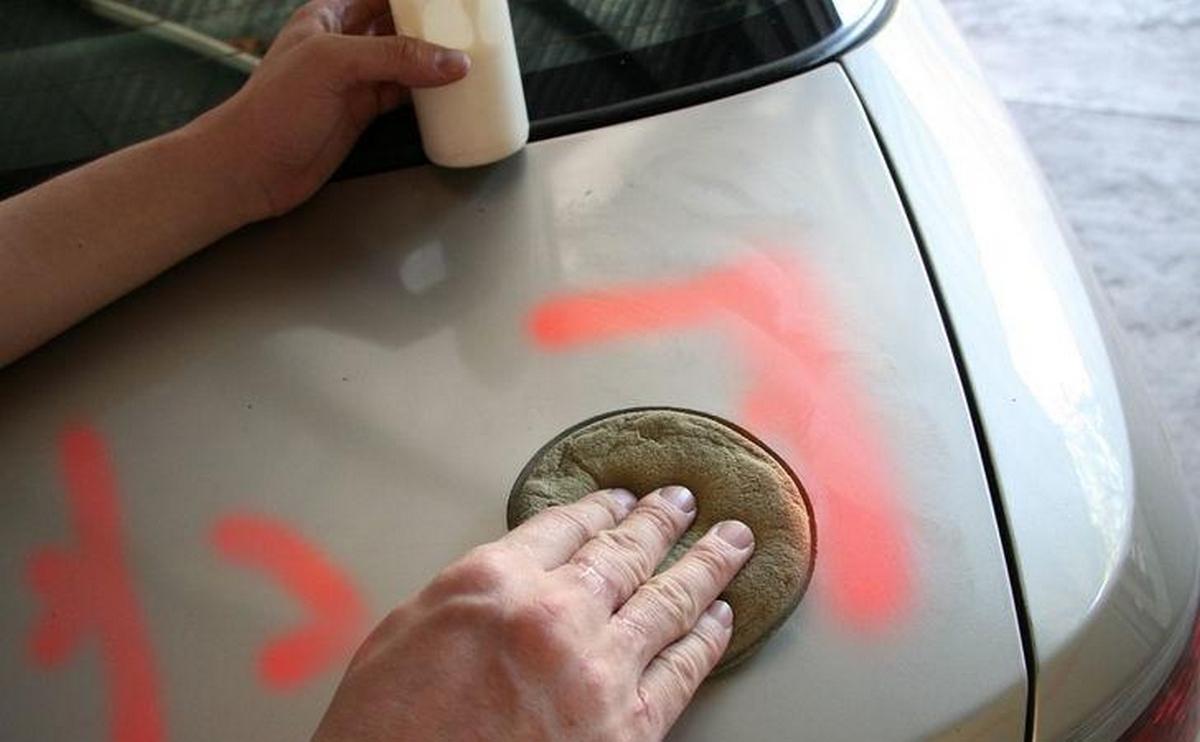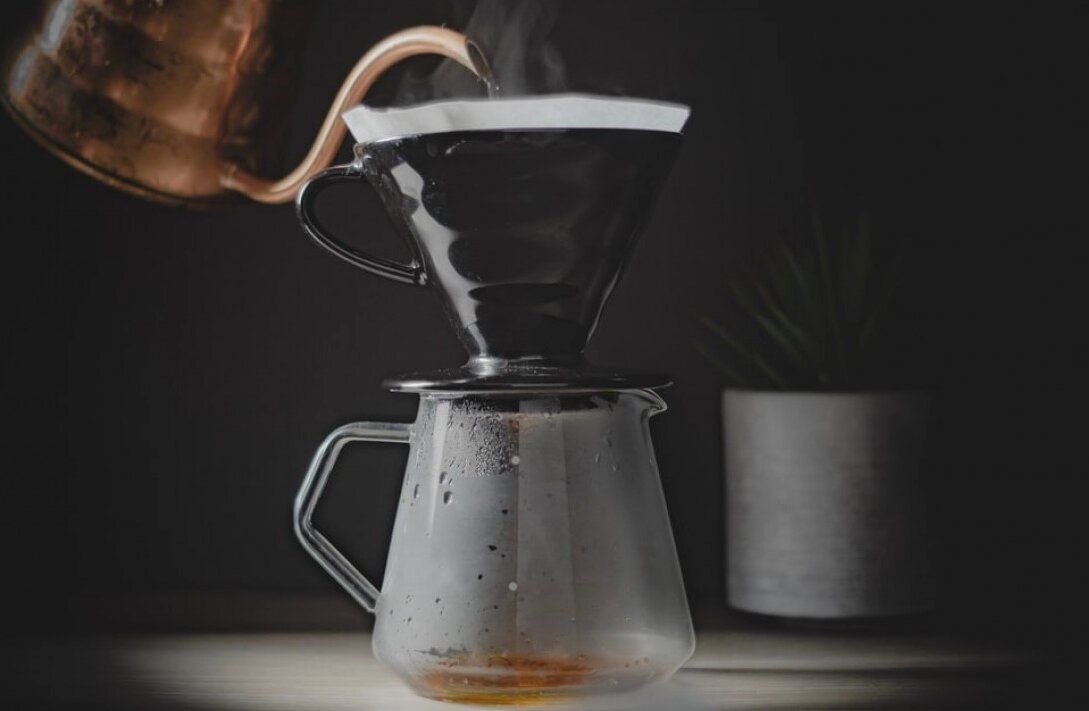Rating of the best paint washes from metal for 2025

In the work of any master tinsmith, it is very often necessary to repaint a metal surface, for which, first of all, it will be necessary to remove the previous layer of paint and varnish material. The easiest way to accomplish this task is to use special washes for metal surfaces.

Content [Hide]
Remover for paint from metal: general information
The chemicals in question would be more correctly called paint removers and they include special products that are directly designed to wash off the old layer of paint from metal substrates. The principle of the chemical cleaning method is to apply a special reagent that can soften or destroy the polymer bonds in the lacquer coating, and therefore its adhesion to the iron base is significantly weakened. With this method, the coating is easily removed from the base and does not require excessive action, such as scraping - the layer will come off on its own.
Such specially oriented substances can remove paint layers not only from metal objects, but can also clean plastic, wooden and ceramic objects at the same time. The absence of the need for machining will save working time and will not allow the destruction of the carrier base itself.
IMPORTANT! It is worth noting that for each type of paint a different type of remover should be used.
Composition and types of washes for paints
Washes can be classified according to applicability and purpose, which will depend on the chemical composition. According to this criterion, the substances under consideration can be divided into:
- Alkaline;
- Acid;
- Organic.
In alkaline samples, the base component is an alkaline solution (classical sodium hydroxide) or another substance that is responsible for the alkaline reaction in the product (for example, lime or soda).The compositions described are quite cheap and mostly universal (they can be used not only for metal objects), however, flushing with them can take a long time, up to several hours, at the same time, there is a risk of corroding especially soft materials. From this it is clear that it is better to use an alkaline mixture to wash off a layer of small thickness, and it is preferable to treat large areas at once with them.
In acid removers, the base component is acid, usually hydrochloric acid. Such compositions are also versatile, but the risk of damage to the surface of the workpiece increases (even when working with metal products). Among other things, an object treated with an acid remover will need further neutralization of the surface by cleaning off acid residues, which is done using alkali or alkaline solutions (quicklime in an aqueous solution will be a vivid example here). Acid samples are practically not represented on the modern retail market, because they are used more often on an industrial scale (for example, in the shipbuilding industry) to eliminate thick layers of paintwork materials from surfaces of special strength and over large areas.
Organic washes in their composition contain various organic solvents. It can be:
- Chlorocarbons;
- Toluene;
- Benzene;
- Turpentine;
- Acetone;
- Multicomponent solvents types 645-651.
Organic removers are particularly versatile and suitable for most surfaces. This type in our time is considered the most popular and in demand, it can be used both in industry and for household tasks.
The principle of operation of washes
After treatment of an object with paintwork materials, the paint base of the composition peels off and softens, and its adhesion to the metal base is lost. Adhesion is significantly reduced due to the penetration of chemically active components into the pores of the paint. The metal paint remover acts on the layer until it completely evaporates on its own. If the paint layer is too thick, then the whole procedure should be repeated until the complete peeling of the paint and varnish composition occurs. The manufacturer may add paraffin or wax to the structure of some types of flushing solutions. After treatment with such products, the remover itself will evaporate much more slowly, and the washing process will increase overall efficiency. However, the use of solutions containing wax or paraffin will require thorough cleaning of the entire product after the paint layer is completely removed.
Modern types for washes of paintwork materials from metal
Conventionally, they can be divided into three groups:
- liquid;
- Aerosol;
- Gel-like.
Liquid washes are a mixture of active elements (solvents such as acid or alkali) without additives. Liquid products do not have a high price, but have some drawbacks - they must be applied exclusively with a brush, because their viscosity leaves much to be desired, and they can simply drain from vertical or inclined surfaces. This property will obviously make it difficult to control their consumption.
Aerosol washes - in their composition they are similar to liquid ones, but they are supplied in aerosol cans, which is very convenient in terms of spraying them over the treated object.The displacing gas in them can be a propane-butane mixture or carbon dioxide, which in the first case means an increased flammability of such substances. Aerosol samples are preferably applied on horizontal bases or on bases with a slight slope. They also tend to run off and have a reduced viscosity. It is extremely convenient to use them for working in confined spaces.
Washes are gel-like - they are liquid formulations that include various thickening modifiers, which increases their viscosity. Acid or alkaline products are thickened by adding special clay, liquid glass, chalk or starch. Sovelite or grease may also be used. If we are talking about organic samples, then they use wax or paraffin, which retain their liquefied state even at low temperatures. Gel-like products, due to their viscosity, are very convenient to use, because. consumption is easier to control. Another advantage is their ability to hold well on inclined grounds, which distinguishes them from other types of removers.
In terms of features of use, the materials under consideration are divided into two large groups:
- Universal - can be used to work with any bases and any types of coatings;
- Special - can only be used for certain types of coatings.
In addition, washes differ in the type of surfaces they can treat:
- Multifunctional - able to remove paint from plastic, wood, iron or ceramics;
- For metals - they are able to work only with objects made of ferrous or non-ferrous metals;
- For plastic - capable of processing objects made of synthetic plastic.
IMPORTANT! It is worth distinguishing between "fully multifunctional" washes and "conditionally multifunctional", the latter are very poorly suited for removing paintwork materials from plastic, because they contain chemically aggressive substances in their composition.

The process of removing paint from metal surfaces
This step-by-step action plan is best considered using the example of the most complex operations - removing paint from aluminum and removing powder coatings from iron. The last method is considered the most difficult and is extremely difficult to mechanically clean. Thus, the following steps must be followed:
- The main thing is to observe safety precautions by first putting on protective gloves and goggles.
- If the object to be cleaned does not have large dimensions, then it is better to completely immerse it in the cleaning solution.
- Until the paint is completely gone, you need to constantly stir the solution, and in special cases also heat it up (chemically active substances for removing powder paints will work more efficiently at elevated temperatures). The standard residence time in the solution should not exceed 20 minutes.
- After the appearance of a visually observable cleaning effect, the object is removed from the solution and the last traces of paint are removed from it with a spatula.
- It is possible to neutralize the remaining paint and washing agent using sodium phosphate (preferably its aqueous solution). You can simply wash everything off with water, but it must be warmed up.
Removal of coatings from aluminum objects should be carried out with extreme caution. Aluminum is a "capricious and delicate" material, so it is not recommended to use alkaline compounds for it. It is better to treat an aluminum object with an aerosol spray that is not based on alkali.Moreover, an aerosol sample will help remove paint even in hard-to-reach places.
Helpful Tips
In order to increase the efficiency of cleaning metals from old paint, you need to be guided by a few simple tips:
- Always thoroughly wash the paintwork to be removed before work. A common household cleaner can help here. This operation will have not only a cleaning effect, but also degrease the surface, which will facilitate the work of the wash. This step allows the wash to penetrate deeper into the metal coating.
- If a product without wax or paraffin is used, then the evaporation rate of the washing composition can be reduced by using ordinary polyethylene. To do this, the treated surface only needs to be covered with oilcloth and withstand a certain time.
- Once the initial paint peeling process is complete, spatulas, scrapers, or stiff brushes are typically used to remove paint residue. Also, the last traces can be removed with a high-pressure water jet.
- In order not to cause damage to the metal base itself, you need to use a specialized wash designed for a particular type of iron. For example, for aluminum objects, only the type of remover specifically designed for them should be used.
- Mixing different types of solvent, although in itself not dangerous, but the result of such actions will be almost zero. Besides, it will just become a waste of money.
- During processing, it is required to constantly ventilate the working room - so it is possible for the master himself to ensure his own safety.
Difficulties of choice
When buying, you should always take into account the type of paint to be removed, the characteristics of the material and the surface to be treated. For most traditional metal stripping jobs, most products on the market will do. Usually, all the possibilities of a particular solution are directly indicated on the label.
However, for the repair of car bodies (as well as other metal products), it is preferable to use organic-based washes, whether specialized or universal. If it is supposed to work with a horizontal surface, then a liquid or aerosol wash will be the best solution here. If work must be carried out with curved or inclined objects, then the use of gel-like compounds will be optimal. If you plan to clean plastic parts from paintwork materials (for example, bumpers or body kits for a car), then only specialized substances can help. Otherwise, the risk of damaging the very carrier base of the object increases significantly.
In the construction industry, organic solutions are not often used, because the range of tasks there is limited to small ceramic or wooden surfaces. If the question arises about metal processing, then cheap alkaline samples are the best fit, especially when the stripped paint layer is made on the basis of drying oil.
Often, situations arise when the master does not know what kind of paint the object is covered with. And in this case, the only best option would be to use multifunctional washes, because they are suitable for any paint. Nevertheless, universal samples of removers can not boast of their own effectiveness.
Rating of the best paint washes from metal for 2025
Budget segment
3rd place: "KUDO RU-9001"
votes 0
This tool belongs to the category of universal and can be used in confined spaces. The unique composition can be applied to various types of coloring substances. Complete removal of the layer is possible in the range from 5 to 10 minutes. One cylinder is designed to process one square meter of area. Perfectly interacts with different metals without damaging their surface. Before starting work, it is necessary to thoroughly degrease the base of the object. The recommended cost for retail chains is 390 rubles.

- Reduced toxicity;
- Ability to work in hard-to-reach places;
- Adequate cost.
- Significant expense;
- It does not interact well with powder coatings.
2nd place: AGAT Avto Silverline
votes 0
This old paint remover is based on an organic solvent and can be applied to any substrate. The product includes polar aprotic solvents and functional additives responsible for penetrating power and increased efficiency. Application of the substance is possible only with a spatula or brush. Due to the presence of many volatile compounds in the substance, processing is recommended to be carried out outdoors. The substance interacts well with plastic products. Does not require prior preparation. The recommended cost for retail chains is 395 rubles.

- Economic consumption;
- Multifunctionality;
- Ability to work in a wide temperature range.
- High content of volatile organic matter.
1st place: Gel Prestige
votes 1
Such a sample incorporates organic solvents, which also includes a corrosion inhibitor that protects the metal from rust.The composition does not need special storage conditions, it is able to easily endure exposure to elevated temperatures. Has a long shelf life. Work is possible in the most difficult weather conditions. However, it copes extremely poorly with multi-layer coatings (re-treatment will be required). The recommended cost for retail chains is 410 rubles.

- Prevents the appearance of rust;
- It is slightly toxic;
- Wide temperature range of application.
- Weak efficiency in relation to multilayer coatings.
Middle price segment
3rd place: "NEOMID"
votes 0
An excellent multilayer coating remover based on methylene chloride, isopropyl alcohol and other additives that increase the effectiveness of the substance. Work is possible both indoors and outdoors. It can work not only with iron, but also with wood. Its use is limited only by the impossibility of processing plastic, because it will instantly undergo destruction. The composition contains volatile organic compounds, so all operations should be carried out only in protective working ammunition. The recommended cost for retail chains is 470 rubles.

- Easily works with vertical and inclined bases;
- Has a high penetration effect;
- It is characterized by relative versatility.
- Short shelf life.
2nd place: Rector
votes 0
This composition is characterized by a certain versatility and is supplied in the form of an aerosol can, which is convenient to process even the most inaccessible places.The formula is unique and can perfectly cope with enamels, varnishes, primers, including thin-layer powder paint. Before work, a thorough cleaning of the base will be required. The smell of the product is neutral, does not flow along inclined surfaces, and is easily neutralized with plain water. It does not interact well with synthetic rubber and plastic. The established retail price is 510 rubles.

- Multifunctionality;
- Ease of application;
- Does not give smudges on the inclined bases.
- Does not interact well with synthetic products.
1st place: "APS-M10"
votes 0
This paint remover is highly viscous, slightly pink in color and highly thixotropic, which means it prevents streaks and spreads evenly over the surface. This property is also relevant for inclined bases. In view of its color shade, it is very easy to control the flow of liquid. The composition includes an acid base that can effectively affect any paint and varnish materials, including powder ones. Before starting work, you need to take care of proper ventilation, and the surface must be thoroughly degreased. Processing is carried out in protective ammunition. The recommended cost for retail chains is 505 rubles.

- uniformity of application;
- Easy control over spending;
- Airless spray is acceptable;
- Adequate price.
- Not detected.
Premium class
3rd place: "Hi-Gear Quick & Safe Paint & Gasket Remover"
votes 0
Such a tool is directly positioned by the manufacturer as a substance for performing automotive body work.The composition is intended for use during the repair of components and assemblies of the machine, they can not only remove coatings, but also remove old gaskets and sealants. The product is supplied in the form of an aerosol, which provides a better treatment of relief surfaces in the area of acupressure. Due to its increased reactivity, it can perfectly cope with multi-layer coatings, but this treatment is best done twice. Substance overexpenditure is possible. The recommended cost for retail chains is 520 rubles.

- The absence of toxic components in the composition;
- Does not create smudges;
- Works with multi-layer coatings.
- Not detected.
2nd place: "HB BODY 700"
votes 0
This substance can be used not only as a wash, but also as a cleaner for painting accessories. Contains organic solvents. It is an ideal solution for fine cleaning of body parts of cars, because it does not have a negative effect on the metal. The wash begins its work immediately upon application, but for this you will need to use a brush or roller (the substance does not have sufficient density for a spatula). Working time - 10-25 minutes. The recommended cost for retail chains is 580 rubles.

- Instant action;
- Complete impregnation of the bases;
- Does not flow in oblique directions.
- High toxicity;
- High price.
1st place: "ABRO PR-600"
votes 0
This aerosol substance is quickly applied and has the properties of deep penetration into the paintwork layer. It is able to reliably soften the paint layer, which then will be easy to remove with a spatula.It is very convenient to work with an aerosol in hard-to-reach places, however, a special temperature regime of at least +20 degrees Celsius will be required. During work, you need to use personal protective equipment due to the toxicity of the wash. The recommended cost for retail chains is 610 rubles.

- Does not contain alkali;
- Has an unlimited shelf life;
- Removes multilayer paint.
- Overcharge.
Instead of an epilogue
The analysis of the market of the materials under consideration has established that it is not difficult to find the right option on it, including a specialized wash. At the same time, most formulations are based on highly toxic substances, which obliges the user to use personal protective equipment. Separately, it is worth mentioning that the products, in most cases, are supplied in containers of small volumes, which will require a fair amount of money if large areas need to be treated. However, the rather budgetary cost of samples (even in the premium class) will not lead to special financial costs.
new entries
Categories
Useful
Popular Articles
-

Top ranking of the best and cheapest scooters up to 50cc in 2025
Views: 131656 -

Rating of the best soundproofing materials for an apartment in 2025
Views: 127697 -

Rating of cheap analogues of expensive medicines for flu and colds for 2025
Views: 124524 -

The best men's sneakers in 2025
Views: 124041 -

The Best Complex Vitamins in 2025
Views: 121945 -

Top ranking of the best smartwatches 2025 - price-quality ratio
Views: 114984 -

The best paint for gray hair - top rating 2025
Views: 113400 -

Ranking of the best wood paints for interior work in 2025
Views: 110326 -

Rating of the best spinning reels in 2025
Views: 105334 -

Ranking of the best sex dolls for men for 2025
Views: 104373 -

Ranking of the best action cameras from China in 2025
Views: 102221 -

The most effective calcium preparations for adults and children in 2025
Views: 102015









